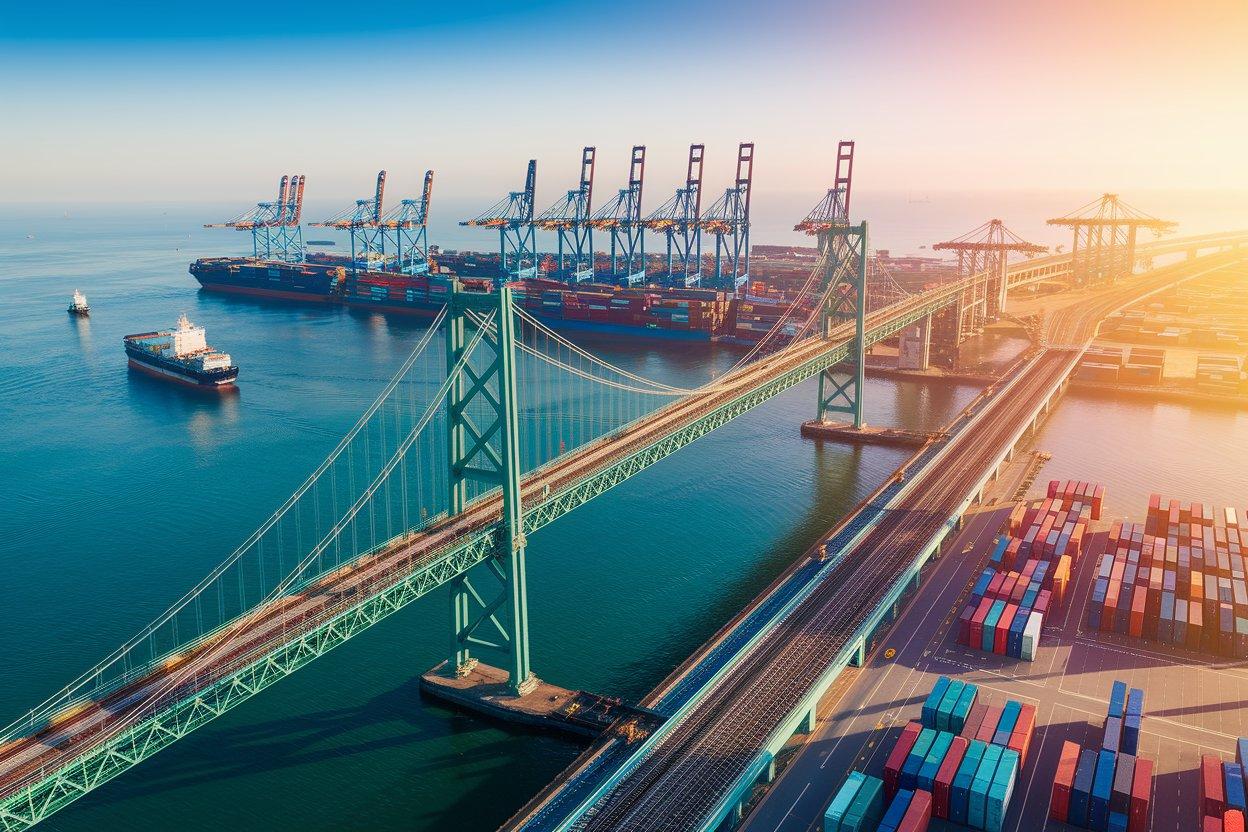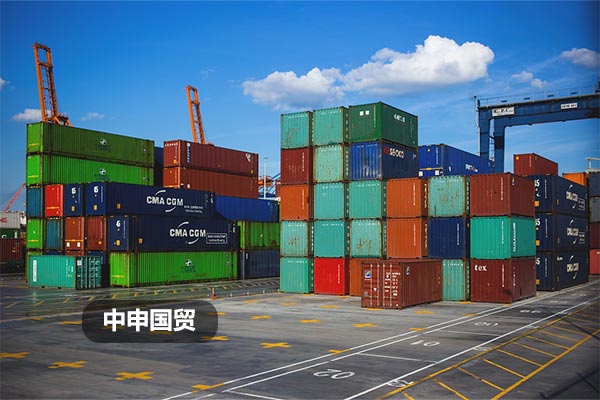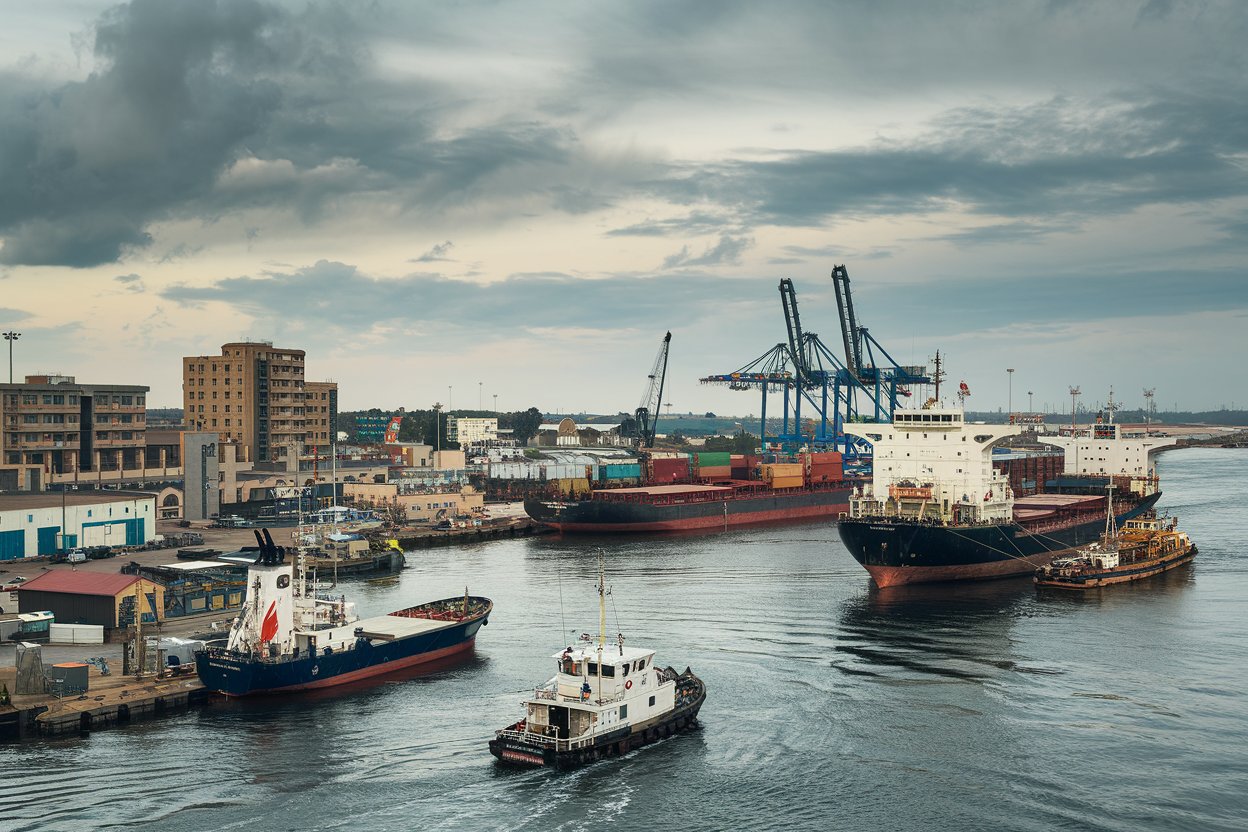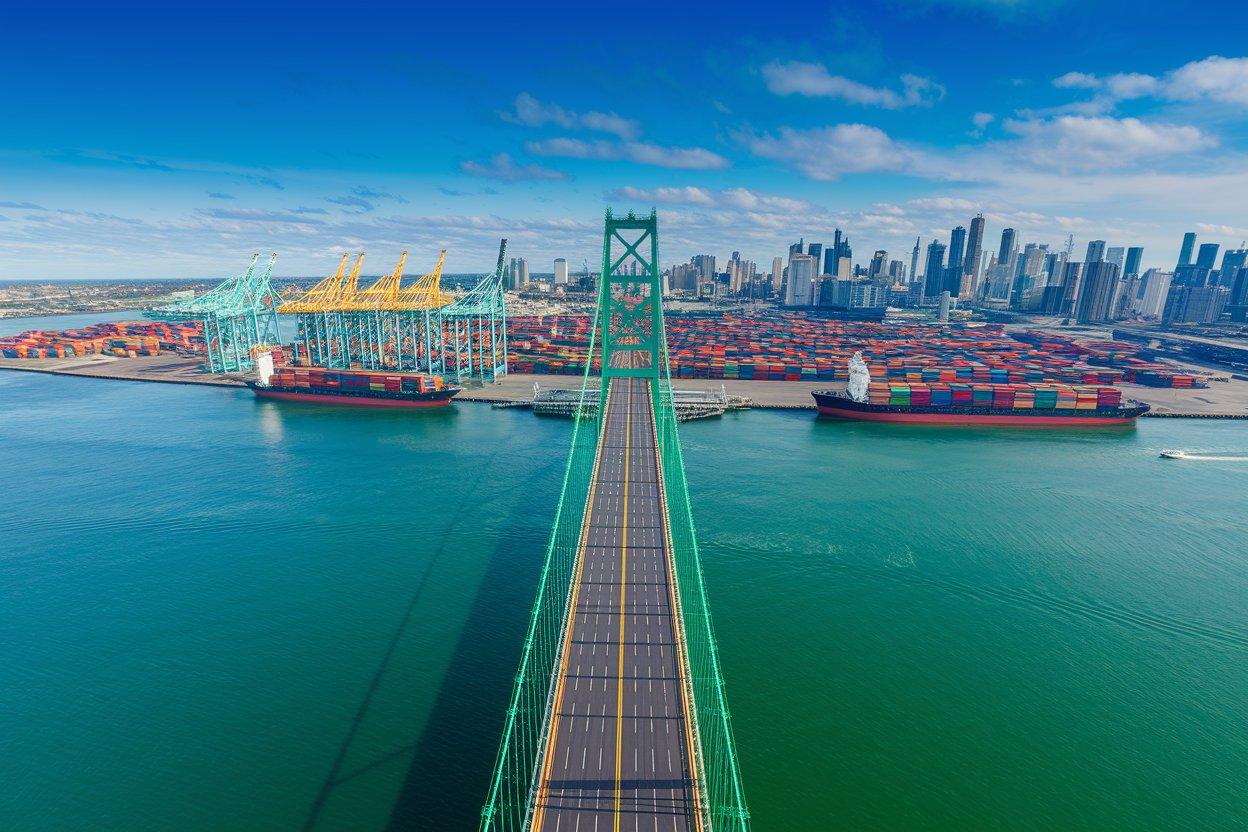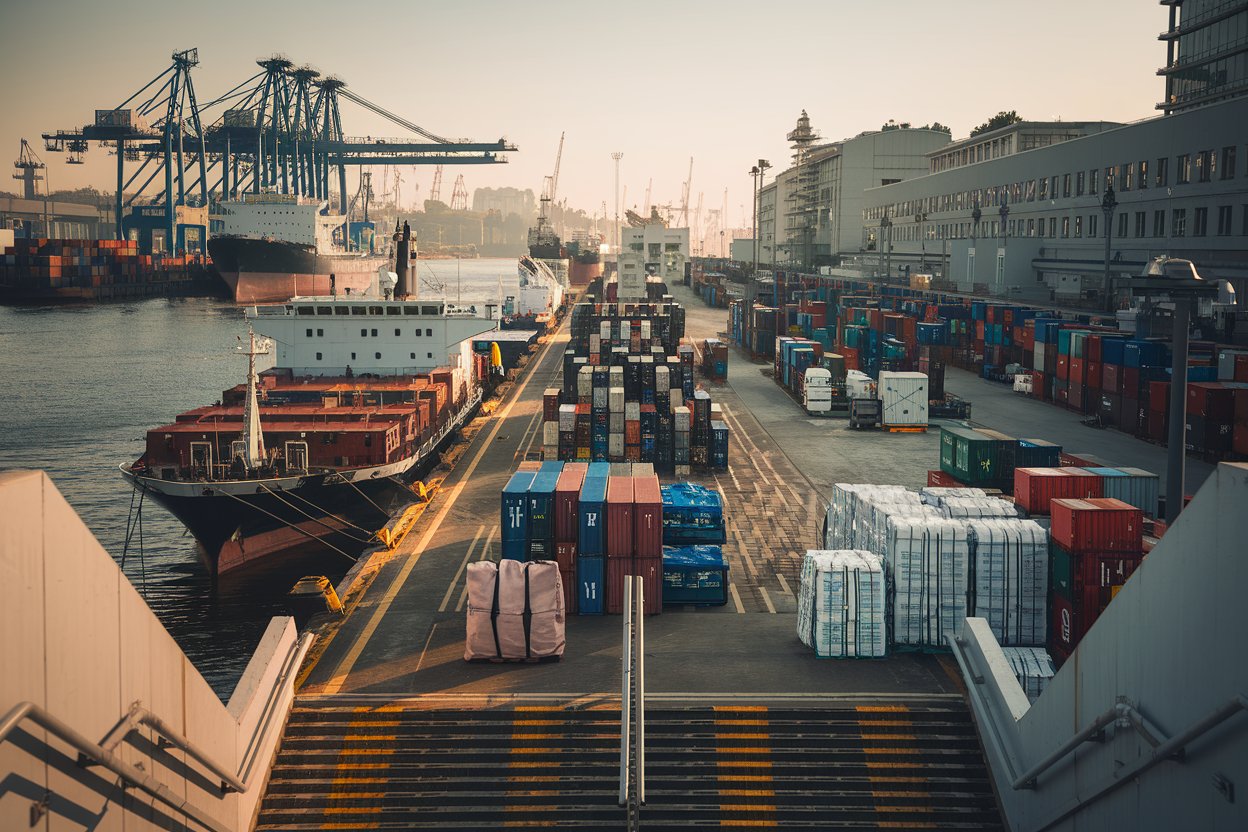Turbocharger Import Clearance Guide: How to Efficiently Handle Complex Regulations and Risks?
久久精品国产亚洲av日韩 |
久久碰国产一区二区三区 |
黄色三级av在线免费播放 |
一区二区三区在线日本在线视频
|
久久精品美女av一区二区 |
亚洲国产精品久久久久性色av |
婷婷四房综合激情五月在线 |
五月综合婷婷开心综合婷婷 |
一区二区三区日韩欧美国产 |
国产欧美日韩一区二区三区精品
|
国产自产一区二区三区视频 |
黄色影院在线观看一区二区
|
一区二区三区有码在线播放 |
96国语自产免费精品视频 |
91久久精品国产91久久性色 |
暗交小拗女一区二区三区 |
国产高清在线精品一区二区三 |
欧美午夜精品一区二区三 |
久久久精品久久久精品久久 |
国产一区二区三区日韩精品 |
日本免费一区最新在线观看 |
日本人妻久久久久久久久 |
精品女同一区二区三区亚亚洲洲 |
日本一区二区三区免费不卡视频
|
91精品国产薄丝高跟在线播
|
大胸熟女少妇一区二区三区
|
18禁无遮挡禁无遮挡免费播放
|
国产精品久久久久久一区 |
黑人中出人妻少妇一区二区 |
久久这里只有精品好国产 |
欧美色偷偷在线视频播放 |
国产黄片a三级久久久久久 |
亚洲精品一区二区三区四区av |
制服丝袜中文字幕一区二区 |
亚洲精品中国一区二区久久 |
亚洲福利欧美日韩午夜一区
|
亚洲大色堂国产资源在线观看 |
亚洲国产精品久久久久性色av |
亚洲av毛片一区二区三区影视 |
五月天丁香色婷婷中文字幕 |
欧美一区二区在线观看不卡 |
国产精品熟女av老熟女 |
91视在线国内在线播放 |
久久精品国产一区二区涩涩
|
免费看污片网站在线观看 |
国产精品亚洲专区一区二区三区 |
一区二区三区av 在线播放 |
国产高颜值美女主播在线 |
日本免费一区二区三区视频在线 |
91精品国产综合久久香蕉观看 |
亚洲精品乱码久久久久久电影
|
亚洲综合国产一二三四五区 |
蜜臀欧美精品一区二区免费看 |
制服丝袜中文字幕一区二区
|
国产无人区码一码二码三码区别 |
国产精东av剧情在线一区二区 |
丰满少妇人妻视频一区二区三区 |
激情综合网五月激情俺也去 |
国产精品亚洲综合久久婷婷 |
亚洲情色av在线免费观看 |
亚洲国产韩国欧美在线天堂 |
精品人妻av综合一区二区 |
乱色老熟妇一区二区三区 |
国产午夜精品理论片免费视频 |
午夜激情福利在线免费看 |
午夜人妻av一区二区三区 |
北岛玲成人精品一区二区三区 |
亚洲十八禁在线免费观看 |
日韩欧美亚洲国产精品字幕久久久 |
欧美巨大精品一区二区三区 |
久久天天躁夜夜躁狠狠躁 |
亚洲国产欧美日韩成人精专区
|
污污污的网站在线免费看 |
久久国产亚洲精品超碰热 |
黄色a级三级三级三级的电影 |
中文字幕人妻系列东京热 |
欧美加勒比一区二区三区 |
久久九九视频免费观看久久九九视频 |
欧美国产精品久久久久久 |
国产精品蜜臀av在线一区 |
亚洲精品一区二区三区麻豆
|
国产电影一区二区三区在线观看 |
日本不卡一区二区三区在线免费 |
暗交小拗女一区二区三区 |
人妻体体内射精一区二区
|
五月婷婷激情桃花床戏视频网
|
日韩人妻精品一区二区三区在线
|
日韩在线一区二区三区中文字幕 |
欧美欧美欧美欧美在线观看 |
97色婷婷成人综合在线观看 |
欧美极品色午夜视频在线观看 |
成人黄网站色视免费大全 |
少妇人妻精品一区三区二区 |
日本一区二区在线视频观看 |
欧美色欧美精品在线观看 |
亚洲精品中文字幕无乱码麻豆 |
久久这里只有精品好国产 |
国产小黄片免费观看小黄片 |
欧美国产一区二区三区在线播放 |
日本高清不卡中文字幕免费 |
91在线精品免费一区欧美直播
|
国产不卡手机在线观看 |
国产综合av在线免费观看 |
精品一区二区三区在线网站 |
欧美一区日韩二区日韩二区 |
制服丝袜中文字幕一区二区
|
国产欧美一区二区三区不卡高清 |
精品人妻久久久久久888不卡 |
婷婷99久久久精品综合 |
国产一区二区精品偷斗情91麻豆 |
亚洲av日韩av在线播放 |
亚洲一区二区三区视频在线播放 |
精品国产精品网麻豆系列 |
亚洲av成人一区二区三区在线 |
欧美精品区一区二区三区 |
色综合一区二区日本韩国亚洲 |
欧美激情一区二区三区啪啪啪 |
91精品国产乱码久久蜜桃麻豆 |
嫩草国产一区二区三区av |
国产精品日韩精品中文字幕 |
亚洲欧美一区精品中文字幕 |
亚洲av伊人久久综合小说 |
影音中文字幕av资源在线 |
亚洲限制级电影一区二区 |
小草在线观看视频播放2019 |
国产亚洲一区二区操老熟女av |
999精品自产国产免费 |
人妻少妇精品一区毛二区 |
精品国产18久久久久二 |
欧美一区二区三区免费在线观看
|
日韩电影中文字幕在线观看 |
亚洲av激情电影在线观看 |
国产乱码欧美乱码在线视频
|
国产精品亚洲精品日韩已满十八小 |
色综合一区二区日本韩国亚洲 |
人妻av在线一区二区三区 |
亚洲国产精品久久男人天堂 |
亚洲精品亚洲人在线观看 |
五月天最新网址精品综合 |
欧美黄色一区二区在线观看 |
国产肉丝精品91一二区 |
欧美与黑人午夜猛交久久 |
日本东京热视频在线观看 |
一区二区三区在线观看日韩 |
亚洲国产成人精品毛片九色 |
亚洲精品国产成人久久精品网
|
最近日韩一区二区三区四区av |
精品夜夜嗨av一区二区 |
国产一区二区三区精品在线观看
|
欧美日韩一区二区三区精品视频 |
手机在线观看国产一区二区三区 |
欧美色偷偷在线视频播放 |
欧美电影日本电影国产电影 |
99久久精品免费看国产一区
|
激情五月婷婷丁香六月 |
日本人妻久久久久久久久
|
亚洲区激情区图片小说区 |
一区二区三区手机在线播放 |
69堂国产成人精品视频 |
久久国产av性色生活片 |
国产肉丝精品91一二区 |
国产成人精品高清在线麻豆 |
久久这里只有精品一区二区三区
|
亚洲中文字幕日韩一区二区 |
91色老久久精品偷偷蜜臀九色 |
国产爽爽爽爽爽爽爽爽爽 |
国产一区二区三区日韩精品 |
97色伦在色在线播放免费 |
国产精品亚洲综合久久婷婷 |
国产激情久久久久久熟女 |
欧美精品高清在线一区二区三区 |
欧美久久免费鲁丝一二区 |
亚洲人成一区二区三区不卡 |
亚洲另类国产精品一区二区三区 |
日韩欧美中文字幕无敌色 |
国产精品久久观看美女毛茸茸 |
中文字幕一区二区人妻秘书 |
日韩精品在线观看一二三 |
精品精品国产一区二区性色av |
亚州女同性恋一区二区三区 |
欧美亚洲成人一区二区三区
|
国产午夜福利视频第三区 |
欧美激情欲高潮视频高清 |
国产亚洲精品久久久一区 |
熟女av综合一区二区三区 |
欧美欧美欧美欧美在线观看 |
小草在线观看视频播放2019 |
久久精品国产一区二区涩涩 |
久久99精品久久久久久秒播 |
人妻少妇精品一区毛二区
|
久久久精品国产亚洲av网丝祙 |
丰满少妇人妻视频一区二区三区
|
免费久久久久久中文字幕 |
乱色老熟妇一区二区三区 |
亚洲欧美日韩偷拍一区二区三区 |
小泽玛丽视频在线观看 |
精品日韩av高清一区二区三区 |
91人妻人人澡人人爽从精品 |
欧美精品网站一区二区三区 |
国产欧美一区二区三区网站 |
伊人婷婷涩六月丁香七月 |
女同性恋精品一二三四区 |
精品久久久国产成人久久综合一 |
亚洲天堂熟女一区二区三区 |
久久偷拍国内亚洲青青草 |
日韩a国产v亚洲欧美精品 |
国产综合av在线免费观看 |
国产精品综合视频一区二区三区 |
精品亚洲国产成人痴汉av
|
亚洲精品久久久久久宅男 |
中国一区二区三区高清电影 |
国产欧美日韩精品高清二区综合区 |
国产一区二区三区精品在线观看 |
国产精品亚洲二区在线看 |
国产成人精品亚洲高清在线 |
日韩精品一区二区三区射精 |
亚洲欧美国产精品一区二区三区
|
国产蜜臀av在线一区尤物 |
成人特黄特色毛片免费看 |
成人美女黄网站色大色费全看下载
|
欧美色老熟妇与性老熟妇 |
日本国产一区二区三区在线观看 |
亚洲欧美日韩综合另类一区 |
久久久精品国产亚洲av网麻豆 |
免费在线观看91精品美女 |
国产亚洲一区二区三区在线播放
|
亚洲国产成人在人网站天堂 |
国产精品爽爽va在线全集观看 |
小泽玛丽视频在线观看 |
蜜桃av一区二区三区在线观看 |
国产精品熟女av老熟女 |
欧美一区二区精品久久久 |
国产成人一区二区青青草原 |
久久精品国产av一区二区三区 |
欧美激情欲高潮视频高清 |
日韩一级黄色片在线观看的 |
手机在线观看国产一区二区三区 |
色婷婷在线免费观看视频 |
一区二区三区四区av中文字幕 |
国产精品亚洲综合久久久久久久 |
中国一区二区三区高清电影
|
伊人影院在线免费观看电影 |
欧美国产精品久久久久久
|
国产精品69堂凸凹视频 |
国产自拍偷拍在线一区二区
|
国产一区二区自拍偷拍视频 |
精品久久久一区二区三区国产 |
欧美日韩国产精品系列区
|
精品国产亚洲一区二区麻豆 |
亚洲成a人片在线观看yau |
国产日韩欧美视频在线播放
|
国产精品夜夜春夜夜爽久久小 |
日韩电影中文字幕在线观看 |
欧美成人精品一区二三区在线观看
|
精品国产网址免费在线观看 |
成人欧美一区二区三区视频 |
国产av剧情精品老熟女 |
亚洲精品九九九人妻av |
欧美日韩亚洲中文字幕二区网址
|
日韩欧美中文字幕在线四区 |
老司机精品成人免费视频 |
国产一区二区日韩欧美在线 |
久久99综合国产精品亚洲首页 |
综合久久久久综合综合久久久久 |
日韩精品 亚洲一区二区三区 |
亚洲国产精品久久久二区 |
欧美色欧美精品在线观看 |
99精品免费久久久久久久久 |
欧美大陆日韩一区二区三区 |
久久精品国产精品亚洲38 |
亚洲精品乱码久久久久久电影 |
亚洲精品中国一区二区久久 |
亚洲精品涩涩在线观看 |
久99精品免费观看视频 |
人人妻人人妻人人妻碰碰 |
久久精品女人天堂av免费版 |
88精品视频一区二区三区四区 |
国产精品蜜臀av在线一区 |
尤物免费视频网站在线观看
|
粉嫩一区二区三区精品视频 |
亚洲欧美另类人妻第一页 |
国产片av在线观看精品免费 |
小草在线观看视频播放2019 |
国产精品久久久亚洲天堂 |
黄色影院在线观看一区二区 |
人妻中文字幕在线一二区 |
日韩欧美一区二区三区中出内射 |
欧美一区日韩二区日韩二区 |
中文字幕免费av中文字幕免费 |
国产精品免费在线一区二区 |
亚洲春色另类小说校园 |
最新中文字幕乱码不卡一区 |
亚洲天堂精品亚洲天堂精品课程 |
国产精品午夜福利757视频 |
日韩av高清中文字幕在线观看 |
伊人影院在线免费观看电影 |
亚洲国产精品一区二区免费电影 |
五月婷久久不能精品视频 |
国产精品福利在线播放 |
国产91精品露脸国语对白 |
亚洲区欧美区综合区自拍区 |
亚洲一区二区三区自拍偷拍 |
国产成人91色精品免费网站 |
欧美一区二区在线观看不卡
|
欧洲精品一区二区三区中文字幕 |
丝袜人妻电影一区二区三区 |
午夜三级视频久久国产丝袜美腿 |
精品一区二区三区成人免费视频 |
国产午夜福利视频第三区 |
国产成人91色精品免费网站 |
亚洲毛片av不卡一区二区三区 |
男人av天堂男人的网站 |
国产一区二区三区亚洲综合 |
在线小视频一区二区三区 |
美女一区二区三区亚洲麻豆 |
欧美一区二区在线电影网 |
亚洲av噜噜噜一区二区三区 |
日本加勒比中文字幕在线观看 |
91精品国产91久久久久久 |
亚洲av电影一区二区在线观看
|
狠狠狠综合久久久久久久
|
国产精品夜夜春夜夜爽久久小 |
亚洲国产精品久久久av |
飞极速在线观看日韩av |
精品国产乱码久久久久久软 |
成人欧美一区二区三区视频 |
最近日韩一区二区三区四区av |
综合自拍亚洲综合图区欧美 |
欧美日韩加勒比一二三区 |
国产日韩欧美视频在线播放 |
亚洲国产精品久久久av |
日本片一区二区在线视频
|
伊人婷婷涩六月丁香七月 |
91精品国产91久久福利 |
神马午夜福利影院在线观看 |
久久天天躁夜夜躁狠狠躁 |
日韩乱码免费一区二区三区 |
国产亚洲精品久久午夜玫瑰园
|
国产无人区码一码二码三码区别 |
久久久亚洲最大ⅹxxx |
欧美制服丝袜国产日韩一区 |
久久精品久久精品久久精品 |
成人午夜视频全免费观看高清 |
精品日韩亚洲一区二区三区 |
精品国产99久久久成人 |
国产一区二区三区精品在线观看 |
精品一区二区免费视频蜜桃 |
久久精品国产一区二区涩涩 |
久碰久摸久看好男人视频 |
欧美一区二区三区中文字幕在线
|
在线观看精品国产亚洲av |
吉川爱美一区二区三区视频 |
亚洲午夜精品毛片成人播放 |
久久精品一区二区中文字幕 |
欧美日韩国产中文在线一区二区 |
在线看的中文av网址导航 |
手机在线免费观看你懂得 |
欧美精品秘密入口一区二区三区 |
av免费精品一区二区三区蜜桃 |
久久这里只有精品好国产 |
午夜精品久久久久久久第一页 |
精品人妻久久久久久888不卡 |
亚洲午夜精品毛片成人播放 |
开心五月激情五月婷婷综合网 |
精品日韩亚洲一区二区三区 |
yyy6080韩国三级理论久久 |
日韩在线中文字幕第一页 |
亚洲中文精品久久久久久久38 |
一区二区三区四区中文字幕欧美
|
手机在线观看网址你懂的 |
久久久久夜色国产精品亚洲av
|
日韩精品一区二区三区色 |
久久久精品一区二区免费 |
日本无限不卡1区2区3区 |
亚洲国产天堂久久综合网 |
精品人妻少妇系列女友系列 |
91福利社区在线试看一分钟 |
一区二区三区四区欧美日韩日本道 |
51国产午夜精品免费视频 |
国产一区二区三区在线啊 |
国产精品网红尤物福利在线 |
亚洲av乱码一区二区三区绯色 |
亚洲精品色婷婷在线观看 |
亚洲毛片av不卡一区二区三区 |
久久精品国产88久久综合张津瑜 |
国产一区二区精品久久呦 |
色综合天天综合网天天狠天天 |
亚洲精品乱码97久久久久久 |
欧美一区二区三区四区五区 |
青青草原在线视频欧美 |
国产毛片一区二区三区秋郁浓 |
日韩欧美亚洲国产精品字幕久久久 |
国产欧美大陆日韩精品亚洲综合
|
欧美制服丝袜国产日韩一区 |
最新亚洲电影一区二区三区 |
亚洲国产精品久久久二区 |
最近中文字幕高清免费大全 |
精品少妇久久一区二区三区 |
亚洲综合视频在线免费观看 |
中文字幕一二三四区亚洲乱码 |
欧美日韩久久久久免费看 |
飞极速在线观看日韩av
|
国产精品一区二区三区剧情片 |
av小说亚洲日中文字幕 |
日韩欧美中文字幕1234区 |
国产精品久久久亚洲综合天堂
|
美女爱爱图片一区二区三区 |
国产大学生自拍视频在线 |
性色av资源一区二区三区 |
日韩在线一区二区三区中文字幕 |
日本一区二区在线视频观看 |
欧美一区二区免费在线观看 |
亚洲国产精品久久久久性色av |
亚洲第一区欧美日韩在线 |
国产亚洲精品综合一区二区 |
国产亚洲一区二区三区在线播放 |
一本不卡欧美一区二区三区 |
亚洲av香蕉一区二区三区av |
黄色片黄色片黄色片亚洲黄色片 |
欧美中文字幕精在线不卡
|
日韩精品人妻中文字幕有码网址 |
精品久久久久久久免费影院大全 |
国产高清精品免费在线观看 |
国产视频日韩视频欧美视频 |
小泽玛利亚av在线视频 |
国产一区二区三区网站视频 |
欧美中文字幕一区二区综合我 |
99久在线国内在线播放免费观看
|
久久综合色最新久久综合色 |
久久av一区二区三区四区五区 |
日韩精品亚洲一区二区三区四区 |
国产a级精品一区二区免费看视频 |
色哟哟一区二区国产精品 |
一区二区三区av 在线播放 |
国产av一区二区日夜精品剧情 |
日韩精品 亚洲一区二区三区 |
亚洲国产激情免费观看网站 |
国产一区你懂的在线观看 |
中文字幕日韩欧美第一页 |
日本a级一区二区资源网站 |
国产精品女人高潮毛片视频
|
欧美成人午夜电影在线观看 |
高清日韩一区二区三区视频 |
亚洲欧美国产乱子精品观
|
午夜亚洲精品久久久久久小说 |
一本色道69色精品综合久久
|
飞极速在线观看日韩av |
9l精品国产高清一区二区三区 |
一本大道综合伊人精品热热 |
久久艹精彩视频免费观看 |
欧美一区二区三区四区五区
|
一区二区三区中文字幕四季 |
手机在线不卡二区中文字幕 |
日本国产一区二区三区在线观看 |
国产精品一区在线观看网址
|
久久久精品欧美一区二区免费 |
精品久久国产老人久久综合 |
在线观看免费视频伊人网 |
欧美成人精品一区二三区在线观看 |
综合国产精品久久久久久久 |
欧美国产精品久久久久久 |
国产亚洲欧美一区二区精 |
亚洲国产激情免费观看网站
|
久久久久久久国产黄片 |
国产精欧美一区二区三区久久 |
一区二区三区在线日本在线视频 |
91精品人妻一区二区三区蜜臀 |
国产精欧美一区二区三区久久 |
国产精品久久久精品一级 |
国产精品一区二区 日韩 欧美
|
黄色片黄色片黄色片亚洲黄色片
|
欧美人在线一区二区三区 |
91精品国产亚洲爽啪在线影院 |
亚洲日本中文字幕高清在线 |
国内偷拍高清精品视频免费
|
国产流白浆一区二区三区免费视频 |
亚洲av另类激情一卡二卡不卡 |
欧美精品国产日韩一区二区三区 |
91麻豆精品国产自产在线的 |
国产自拍三级视频在线观看 |
亚洲一区二区三区av在线 |
欧美一区二区三区四区五
|
亚洲人五月天久久综合九九 |
欧美色综合天天综合高清网 |
av色先锋音影一区二区啪啪操 |
毛片毛片视频毛片视频的毛片
|
欧美日韩一区二区啪啪啪 |
国产成人一区二区青青草原 |
国产麻豆精品电影在线观看 |
色综合一区二区日本韩国亚洲 |
欧美日韩久久久久免费看 |
国产精品黄网站免费进入 |
日韩av一区二区三区网站 |
人妻在线视频一区二区三区 |
亚洲综合欧美综合视频一区 |
深深婷婷久久爱做狠狠天天 |
日韩欧美中文字幕一区二区三区 |
久久国产精品男人的天堂av |
99视热频这里只有精品 |
精品国产熟女一区二区三区
|
日韩欧美国产在线看免费 |
婷婷在线五月天在线视频 |
欧美成人午夜一区二区三区 |
日韩欧美国产在线看免费 |
一区二区三区亚洲欧美日韩人色 |
日韩激情视频免费在线观看 |
国产精品国产三级国产av主播 |
国产亚洲成人av看黄在线观看
|
白嫩丰满少妇一区二区三区 |
国产在线视频欧美一区二区三区
|
欧美日韩国产中文在线观看 |
日韩精品成人av免费看 |
日本一区二区免费在线视频 |
日本一区二区三区人工换脸 |
人妻少妇精品一区毛二区
|
国产亚洲一区二区三区在线观看 |
国产三级在线观看一区二区 |
一本色道久久99精品综合 |
欧美不卡一区二区在线视频
|
亚洲精品在线中文字幕第一页
|
熟女精品视频一区二区视频 |
国产精品美女下面无遮挡 |
性感91白丝美女在线精品 |
国产亚洲精品久久久久久久久动漫
|
国产精品视频一区二区三区首页 |
日本黄色中文字幕不卡在线 |
欧美黄色一区二区在线观看
|
欧美成人午夜一区二区三区
|
成人黄页视频在线播放 |
小泽玛利亚av在线视频 |
97色婷婷成人综合在线观看
|
日韩av高清中文字幕在线观看 |
精品人人妻人人澡人人爽人人牛牛 |
久久精品国产热久久精品国产亚洲 |
蜜臀av一区二区国产在线 |
欧美日韩一码二码三区四区 |
清纯唯美亚洲色图在线视频 |
成人污污视频在线观看网站 |
伊人婷婷涩六月丁香七月 |
欧美精品一区91久久久 |
国产精品综合视频一区二区三区 |
中文字幕精品一区二区三区老狼 |
国产免费一区二区三区性色 |
国语自产精品视频在线视频学生
|
国产主播一区二区三区在线观看 |
精品人妻久久久久久888不卡 |
激情综合网五月六月丁香国产
|
亚洲第一欧美一区二区精品 |
午夜国产三级一区二区三 |
精品五月天草原婷婷在线视频 |
日本中文字幕一区二区三 |
久久精品久久久久一区二区
|
国产精品清纯白嫩美女s |
韩国三级华丽外出在线观看 |
欧美激情一区二区三区四区 |
91亚洲国产成人久久精品蜜臀
|
亚洲欧美日韩中文字幕高清
|
国产片av在线观看精品免费 |
国产精品成人又粗又长又爽 |
国产毛片一区二区三区秋郁浓 |
国产清纯美女啪精品一区 |
久久婷婷色香五月综合图
|
最近中文字幕mv免费高清 |
欧美日韩免费一区二三区 |
亚洲十八禁精品成人一区二区 |
国产黄片一区二区三区四区 |
亚洲国产精品无石码久久 |
免费无遮挡午夜视频网站 |
国产老人一区av二区三区 |
综合欧美视频一区二区三区
|
亚洲天堂一区二区三区免费观看 |
蜜桃91精品一区二区三区
|
一本不卡欧美一区二区三区 |
精品一区二区免费视频蜜桃
|
精品人妻少妇嫩草av码专区 |
久久天堂一区二区三区av |
在线看的中文av网址导航 |
亚洲精品国产综合一线久久 |
欧美一区二区三区加勒比 |
国产寡妇精品久久久久久 |
欧美成人高清视频在线播放 |
婷婷四房综合激情五月在线 |
97色伦在色在线播放免费 |
国产精品久久久亚洲综合天堂 |
中文字幕一区二区三区欧美日韩 |
在线播放亚洲欧美日韩第一区 |
欧美日韩加勒比一二三区 |
日韩一区日韩二区日韩三区 |
69堂凹凸视频在线观看 |
精品国产一区二区三区久久久性 |
国产成人亚洲综合小说区 |
久久久精品欧美一区二区免费 |
日本a级一区二区在线免费观看 |
国产欧美一区二区在线观看 |
尤物精品国产第一福利网站
|
国产一区二区精品久久呦 |
亚洲区欧美区综合区自拍区
|
亚洲av噜噜噜一区二区三区 |
午夜激情丝袜美腿诱惑影院 |
亚洲熟女av综合一区二区三区个 |
日韩欧美国产精品一二三区免费在线
|
国产成人精品综合久久久久换脸 |
欧美精品一区91久久久 |
欧美大陆日韩一区二区三区 |
黄色影院在线观看一区二区 |
18禁真人污视免费网站 |
欧美日韩久久久久免费看 |
亚洲欧美日本在线视频观看 |
欧美国产精品久久久免费 |
最近中文字幕mv免费高清 |
91久久精品日日躁夜夜躁国产 |
91久久精品国产91久久性色 |
久久精品亚洲熟女av蜜謦 |
欧美日韩亚洲激情在线观看 |
97久久久综合亚洲久久88 |
亚州中文字幕乱码中文字幕
|
91麻豆精品国产自产在线的 |
激情91精品大片在线观看 |
国产高颜值美女主播在线 |
久久久久国产一区二区三区下载 |
青青视频在线观看一级二级 |
中文字幕在线高清第一页 |
日本高清视频一区二区在线观看 |
日韩a国产v亚洲欧美精品 |
欧美一区二区三区中文字幕在线 |
综合久久五十路熟女中出 |
欧美日韩亚洲中文字幕一区 |
亚洲一区二区三区自拍偷拍 |
久久精品一区二区三区资源网 |
国产流白浆一区二区三区免费视频 |
精品久久国产老人久久综合 |
精品人人妻人人澡人人爽人人牛牛 |
农村老女人久久毛片免费看 |
精品国产一区二区免费久久 |
久久精品店一区二区三区
|
新片青青澡久久久久久久久精品 |
激情久久av区二区av |
一区二区三区日本韩国欧美
|
欧美日韩中文字幕一区不卡 |
精品日韩亚洲一区二区三区 |
亚洲色图国产精品一区二区三区 |
日韩av毛片高清免费在线观看 |
欧美一区二区三区激情免费 |
国产av一区二区色呦呦 |
亚洲第一欧美一区二区精品 |
国产欧美另类久久久精品不卡 |
中文字幕十乱码中文字幕 |
国产精品福利网站在线观看 |
色呦呦免费观看一区二区 |
亚洲综合色一区二区三区另类 |
我露出雪白的奶头给我同桌吃 |
亚洲欧美日韩中文字幕高清 |
日韩免费高清中文av |
国产欧美韩日一二精品专区 |
91亚洲国产成人久久精品蜜臀 |
中文字幕 日韩经典 人妻 |
欧美色偷偷在线视频播放 |
久久av一区二区三区四区五区 |
国产精品中文字幕免费观看 |
久久国产精品一区二区三区精品 |
国产欧美一区二区在线观看 |
亚洲国产精品久久男人天堂
|
国产欧美日韩精品久久久
|
青青草av一区二区三区 |
一区二区三区久久久久国产精品 |
亚洲欧美国产精品中文字幕 |
欧美丰满人妻一区二区三区
|
国产看片色网站亚洲av |
日韩国产精品久久久久久亚洲 |
日本一区二区三区在线观看免费 |
日本高清视频在线网站不卡 |
成人av一区二区三区免费在线 |
美女18禁国产精品久久久久久 |
国产主播一区二区三区在线观看 |
久久偷拍国内亚洲青青草 |
欧美一区日韩二区日韩二区 |
亚洲av噜噜在线最新网站 |
日韩国产一区二区三区av |
色婷婷一区二区三区四区成人
|
亚洲精品一区二区三区免 |
天堂网久久久国产午夜精品一二
|
在线日本一区二区免费观看 |
玩弄人妻少妇精品视频网站 |
在线看的中文av网址导航 |
国产丝袜美女av一区二区三区
|
亚洲国产精品线路久久 |
99久久精品免费看国产四区 |
久久国产综合伊人77777 |
久久久精品免费久精品蜜桃 |
日韩精品成人av免费看 |
91久久精品一区二区三区大 |
国产精品国产三级国产专区 |
老司机精品成人免费视频 |
激情五月婷婷丁香六月 |
精品国产精品网麻豆系列 |
欧美色偷偷在线视频播放
|
亚洲福利欧美日韩午夜一区 |
欧美国产亚洲自拍第二页
|
色天天综合色天天天天看大片 |
97久久夜色精品国产蜜桃 |
91精品蜜臀在线一区尤物 |
亚洲欧美不卡高清在线观看 |
国产日韩欧美视频在线播放 |
日韩精品自拍偷拍一区二区 |
欧美日韩精品视频一区二区三区四区
|
亚洲国产天堂久久综合网 |
乱色老熟妇一区二区三区 |
大胸熟女少妇一区二区三区 |
中文字幕日韩欧美日韩在线 |
暗交小拗女一区二区三区 |
青青草原在线视频观看精品 |
精品国产一区二区三区久久久性 |
亚洲综合精品一区二区三区 |
国产精品宅福利无圣光视频 |
日本电影777久久久 |
欧美中文字幕一二三四乱码 |
国产大学生自拍视频在线 |
日本牲交大片在线一区二区
|
91精品人妻一区二区三区蜜臀 |
日本一区二区三区不卡在线看 |
手机在线不卡二区中文字幕 |
国产一区二区三区日韩精品 |
国产91色综合久久免费分享
|
不卡在线一一区二区三区91 |
国产精品色午夜免费视频69 |
最好看的日韩中文字幕电影 |
深深婷婷久久爱做狠狠天天 |
欧美成人午夜一区二区三区 |
久久国产av性色生活片 |
国产老人一区av二区三区 |
国产av一区二区日夜精品剧情 |
久久综合九色综合88中文字幕有码 |
亚洲av乱码一区二区三区绯色 |
蜜臀欧美精品一区二区免费看 |
欧美激情一区二区三区精品
|
同房后女生下面有黄色分泌物 |
日本动漫人妻作爱大尺度 |
欧美一级高清片国产特黄大片一
|
国产亚洲欧美一区二区精 |
亚洲欧美另类综合图片专区 |
日韩一级黄色片在线观看的 |
国产精品大屁股白浆一区二区 |
国产精品午夜福利免费视频 |
禁止十八岁看污污网免费 |
小泽玛丽视频在线观看 |
中文字幕女同性恋一区二区三区 |
日韩a国产v亚洲欧美精品 |
欧美一区二区精品久久久 |
国产精品亚洲精品日韩已满十八小
|
欧美日韩一区二区啪啪啪 |
亚洲国产av一区二区香蕉精品 |
欧美国产精品久久久久久 |
国产精品白丝av嫩草影院 |
中文字幕精品乱码亚洲一区 |
亚洲一区二区三区欧美精品 |
色爱区综合激情五月综合激情
|
日韩精品一区二区三区射精
|
五月婷婷六月丁香在线播放 |
91久久国产综合久久91 |
欧美日韩精品系列一区二区 |
亚洲av伊人久久综合小说 |
欧美日韩一区二区三区福利 |
北岛玲成人精品一区二区三区 |
狠狠人妻久久久久久综合密桃 |
人妻中文字幕在线一二区 |
久久久国产综合av天堂 |
92看看午夜福利合集免费观看 |
国产精品区一区二区国模 |
国产精欧美一区二区三区久久
|
91亚洲国产成人久久精品蜜臀 |
亚洲av日韩精品久久国产 |
欧美电影日本电影国产电影 |
国产精品亚洲美女av网站 |
国产无套精品白浆在线观看
|
国产美女捏自己奶头91 |
中文字幕日韩欧美日韩在线 |
人人妻人人妻人人妻碰碰 |
国产成人亚洲欧美在线二区小说 |
国产精品一区二区三区剧情片 |
北岛玲成人精品一区二区三区 |
精品美女视频一区二区三区
|
国产av剧情精品老熟女 |
一本大道综合伊人精品热热 |
在线观看麻豆91精品国产 |
欧美成人免费va影院高清 |
亚洲欧美国产乱子精品观
|
精品国产乱码久久久久久软
|
日本免费一区二区三区视频在线 |
日韩欧美国产中文字幕综合 |
精品国产一区二区色老头 |
亚洲一区二区三区视频在线播放 |
国产av一区二区日夜精品剧情 |
欧美大片久久久久久久久 |
深深婷婷久久爱做狠狠天天 |
色狠狠婷婷一区二区三区 |
日韩av高清中文字幕在线观看
|
国内自拍偷拍网站一区二区 |
久久av一区二区三区四区五区 |
欧美韩一区二区三区电影免费看
|
国产精品久久久精品一级 |
精品国产精品久久一区免费式 |
精品人妻午夜一区二区三区四区
|
日韩精品一区二区三区四区不卡 |
国产av剧情精品老熟女 |
成人激情毛片免费在线看 |
精品日韩av高清一区二区三区 |
久久久一区二区三区999 |
色悠久久久久综合网小说 |
一区二区三区三级18岁看的 |
欧美精品一区91久久久 |
午夜精品久久久久久久9蜜桃 |
欧美极品色午夜视频在线观看 |
亚洲欧美一区二区精品性色 |
青青视频在线观看一级二级 |
国产盗摄一区二区三区厕所视频 |
黄色av网站未满十八周岁在线播放
|
最近高清中文字幕一区二区 |
日本一区二区免费在线视频 |
在线看的中文av网址导航 |
久久99久久久久久久久 |
国产精品欧美日韩在线观看 |
91精品国产亚洲爽啪在线影院 |
手机在线观看网址你懂的 |
91青青青手机频在线观看 |
日本高清视频一区二区在线观看
|
国产欧美一区二区三区精剧 |
日韩不卡一区二区在线观看 |
欧美色偷偷在线视频播放 |
毛片毛片视频毛片视频的毛片 |
国产成人久久精品一区二区三区欧美 |
久久精品国产亚洲av麻 |
高清不卡一卡二卡区在线 |
精品国产精品久久一区免费式 |
日韩av一区二区三区免费观看 |
花野真衣在线观看av中出 |
国产乱人精品视频69av |
综合国产精品久久久久久久
|
日本一区二区三区不卡视频在线 |
免费在线观看91精品美女 |
日韩av高清中文字幕在线观看
|
中文字幕欧美激情一区二区 |
中文一区二区三区中高清免费 |
中文字幕一本一道在线 |
国产一区二区三区精品在线观看
|
秋霞伦理日韩中文字幕av |
男人天堂国产在线2019 |
欧美一区久久人妻中文字幕 |
国产一级二级三级aa视频 |
欧美精品香蕉一区二区三区 |
亚洲电影在线一区二区三区 |
日韩亚洲欧美中文字幕在线观看
|
久久久精品一区二区三区大全
|
国产精品成av人在线观看片 |
国产精品久久久亚洲天堂 |
久久夜色撩人精品国产小说免费 |
久久综合婷婷伊人五月天 |
欧洲欧美精品日韩色午夜 |
亚洲一区二区三区视频在线播放
|
日韩久久精品视频一二三区
|
国产欧美日韩精品一区二区在线 |
婷婷丁香蜜桃激情五月天 |
99久久精品氩 99久久久 |
国产精品羞羞答答色哟哟 |
精品欧美一区二区三区四区 |
91的麻豆精品国产自产在线 |
精品国产一区二区三区久久久性 |
一区二区三区在线日本在线视频 |
av免费在线观看资源网站 |
成人黄页网站在线观看视频 |
黄黄黄污污污的免费网站 |
禁止十八岁看污污网免费 |
婷婷99久久久精品综合 |
男人天堂国产在线2019 |
一区二区三区四区蜜桃 |
黄色a级三级三级三级的电影 |
蜜臀欧美精品一区二区免费看 |
国产精品久久观看美女毛茸茸 |
欧美一区二区三区加勒比 |
色婷婷六月亚洲婷婷国产 |
国产主播欧美日韩在线播放 |
亚洲欧美一区二区三区爽爽爽
|
天堂资源网一区二区三区 |
亚洲第一欧美一区二区精品 |
国产精品网红尤物福利在线 |
伊人天堂午夜精品福利网 |
精品国产日韩欧美另类免费观看 |
爱丝官网一区二区午夜福利视频 |
婷婷99精品国产97久久综合 |
午夜精品久久久久久久9蜜桃 |
农村老女人久久毛片免费看 |
国产无套精品白浆在线观看 |
人妻中文字幕在线一二区 |
国产女主播一区二区三区四区 |
亚洲第一欧美一区二区精品 |
适合一家人看的国产电影 |
亚洲欧美国产乱子精品观
|
久久亚洲中文字幕精品熟女一区
|
欧美大片免费观看一区二区 |
国产吧中文字幕欧美日韩 |
亚洲精品亚洲人在线观看 |
欧美亚洲一区二区久久播 |
免费欧美一区二区三区四区 |
疯狂欧美牲乱大交777 |
今天有什么电影可以看在电影院 |
日韩精品电影综合区亚洲 |
神马午夜福利影院在线观看 |
人妻中文字幕在线一二区 |
中文字幕成人精品久久不卡 |
欧美精品久久久久久一区二区三区
|
日韩精品 亚洲一区二区三区 |
亚洲成av人黄网站在线观看 |
国产农村妇女一二三区 |
黑人中出人妻少妇一区二区 |
日韩欧美中文字幕在线四区
|
日韩精品一区二区三区不长视频 |
婷婷在线五月天在线视频 |
国产网曝门精品一区二区三区 |
91偷国自产一区二区三区蜜臀 |
欧美猛少妇色xxxx久久久久久 |
成人污污视频在线观看网站 |
日韩熟女精品一区二区三区视频
|
国产综合久久精品东京热 |
一区二区三区视频二男一女 |
日韩欧美中文字幕无敌色 |
色婷婷av一区二区三区免费 |
一本不卡欧美一区二区三区
|
欧洲欧美精品日韩色午夜 |
久久国产夜色精品鲁鲁99 |
成人黄页网站在线观看视频 |
婷婷99精品国产97久久综合 |
97性潮久久久久久久久播 |
中文字幕乱码亚洲无线码二区 |
久久精品三级一区二区av |
欧美极品一区二区三区欧美大片 |
小泽玛丽视频在线观看 |
国产91亚洲精品久久久 |
亚洲欧美日韩综合第一第二区 |
国产精品亚洲一区二区久久 |
97视频在线观看男人的天堂 |
五月婷久久不能精品视频 |
国产一区二区精品久久呦 |
欧美精品一区91久久久 |
最新日韩欧美不卡一二三区 |
国产欧美日韩一区二区三区精品 |
国产黄片一区二区三区四区 |
黄色三级av在线免费播放 |
国产精品欧美三级在线观看 |
午夜精品久久久久久久9蜜桃
|
日韩欧美亚洲中文字幕乱码 |
国产伦精品一区二区三区2 |
国产成人精品综合久久久久换脸 |
亚洲福利欧美日韩午夜一区 |
日韩在线观看中文字幕一区二区 |
欧美天堂一区一区二三区 |
噜噜噜久久亚洲精品国产品 |
99re热自拍视频在线 |
亚洲无人区乱码中文字幕 |
人妻av在线一区二区三区 |
久久婷婷色一区二区三区 |
国产色综合一区二区三区视频精品 |
美女一区二区三区亚洲麻豆
|
国产精品久久久精品一级 |
国产无人区码一码二码三码区别 |
欧美欧美欧美欧美在线观看 |
亚洲中文字幕一区二区三区四 |
亚洲精品一区二区三区小说
|
国产午夜精品理论片免费视频 |
99人妻精品日韩欧美一区二区三区 |
欧美黄色免费网站在线观看 |
最近中文字幕mv免费高清
|
亚洲日本中文字幕高清在线 |
日韩伦理中文字幕一区二区 |
亚洲av成人一区国产精品 |
国产欧美日韩精品高清二区综合区 |
中文字幕 日韩经典 人妻 |
亚洲国产成人激情视频在线 |
中文字幕一二三四区亚洲乱码 |
亚州中文字幕乱码中文字幕 |
精品国产99久久久成人 |
92精品欧美一区二区三区 |
精品国产18久久久久二 |
亚洲精品乱码国产精品乱码 |
国产69精品久久777的观感 |
国产成人精品高清在线麻豆 |
中文字幕高清在线一区二区三区 |
亚洲欧美中文日韩另类特殊 |
欧美色精品视频在线观看
|
欧美日韩激情在线看片亚洲 |
韩日国产精品一区二区三区 |
雅日韩欧美一区二区三区
|
精品国产一区二区免费久久 |
欧美一区二区三区激情免费 |
欧美激情一区二区三区四区
|
91精品国产综合久久久久久蜜月 |
久久久国产精品一区久久 |
久久精品噜噜噜成人av |
欧美成人免费va影院高清 |
日本a级一区二区在线免费观看 |
欧美日韩免费一区二三区 |
狠狠人妻久久久久久综合密桃
|
美女性感黄网站视频久久久
|
精品国产一区二区三区蜜臂 |
亚洲中文字幕日韩一区二区 |
欧美成人午夜电影在线观看 |
老司机精品成人免费视频 |
国产a级精品一区二区免费看视频
国产激情av一区二区三区
|
日韩夫妻精品熟妇人妻一区 |
亚洲精品区国产精品99 |
久久精品亚洲欧美日韩精品中文字幕 |
国产精品爽爽va在线全集观看 |
亚洲国产精品久久久二区 |
久久精品亚洲欧美日韩精品中文字幕 |
日本国产一区二区三区在线观看 |
亚洲精品乱码久久久久久小说 |
国产成人91色精品免费网站 |
国产av一区二区色呦呦 |
中文字幕成人精品久久不卡 |
欧美电影日本电影国产电影
|
97影院理论片在线观看 |
亚洲精品成人av一区二区 |
日韩一区二区三区精品视频第3页 |
欧美中文字幕一二三四乱码 |
麻豆一区二区国产三区亚洲人 |
国产精品女人高潮毛片视频 |
亚洲一区二区三区毛带片 |
日韩a国产v亚洲欧美精品 |
欧美精品国产精品日韩系 |
亚洲十八禁精品成人一区二区
|
亚洲中文字幕一区二区三区四 |
欧美日韩亚洲中文字幕一区 |
久久精品国产精品亚洲38 |
国产精品久久久久久久久久久痴汉 |
9l精品国产高清一区二区三区 |
一区二区三级电影在线观看 |
国产电影一区二区三区在线观看 |
99久久精品氩 99久久久 |
中文高清在线中文字幕日韩 |
国产午夜免费电影在线观看 |
国产蜜臀av在线一区尤物 |
国产精品国产三级国产剧情 |
亚洲欧美日韩另类专区第八区 |
91精品国产乱码久久蜜桃麻豆
|
欧美日韩中文字幕色费性龙做 |
亚洲国产精品久久久二区 |
欧美日韩国产精品系列区
|
国产一区二区叉叉动态图 |
欧美一区二区三区四区五区 |
19久久久国产一区二区 |
白嫩丰满少妇一区二区三区 |
欧美日韩综合中文字幕一区二区
|
中文字幕加勒比视频二区 |
男人天堂国产在线2019 |
欧美日韩免费电影一区二区 |
97性潮久久久久久久久播 |
久久久久国产一区二区三区下载
|
色婷婷亚洲激情人妻交换小说 |
一区二区三区视频二男一女 |
丰满少妇人妻视频一区二区三区
|
手机在线不卡二区中文字幕 |
国产小黄片免费观看小黄片 |
欧美日韩一区二区三区精品视频 |
国产亚洲加勒比久久精品 |
国产另类av一区二区三区 |
中文字幕欧美精品人妻一区 |
国产大学生自拍视频在线
|
99亚洲综合精品久久精品国产久
|
亚洲中文字幕中文字幕中文字幕 |
久久精品三级一区二区av |
国产精品一区在线观看网址
|
午夜激情福利在线免费看 |
97色伦在色在线播放免费 |
国产黄色一级电影一区二区 |
欧美三级韩国三级日本三斤 |
中文字幕精品久久一区二区三区 |
适合一家人看的国产电影 |
成人黄色在线免费观看网站 |
欧美日韩亚洲中文字幕一区 |
亚洲欧洲国产欧美一区精品 |
国产一区二区三区精品在线观看 |
国产伦精品99久久自偷国产 |
亚洲一区二区三区欧美精品 |
精品人妻少妇系列女友系列 |
国产精品久久一区二区三区青青 |
91人妻久久久久99精品系列
|
中文字幕精品乱码亚洲一区 |
日韩和欧美的一区二区三区 |
精品亚洲午夜久久久久四季 |
中文字幕一区二区三区欧美日韩
|
国产农村妇女一二三区 |
欧美一区二区三区中文字幕在线 |
欧美日一区二区三区精品 |
国产女主播一区二区三区四区 |
国产美女捏自己奶头91 |
亚洲人妻一区二区三区av |
国产乱码欧美乱码在线视频 |
日韩精品人妻中文字幕有码网址
|
午夜视频在线观看视频在线观看视频 |
同房后女生下面有黄色分泌物 |
美女高跟鞋喷水一区二区 |
亚洲av日韩精品久久国产 |
色婷婷一区二区三区四区成人 |
国产精品午夜福利免费视频 |
欧美日韩免费电影一区二区 |
国产激情澎湃视频在线观看 |
国产女主播一区二区三区四区 |
亚洲国产成人激情视频在线 |
欧美成人精品视频一区二区 |
亚洲综合精品一区二区三区
|
国产欧美一区二区三区精剧 |
黄色影院在线观看一区二区 |
亚洲人妻一区二区三区av |
国产一级性片在线观看 |
亚洲欧美日韩欧美中文字幕
|
欧美日韩中文字幕色费性龙做 |
a天堂中文在线官网在线 |
怡红院蕉国产免费现现视频 |
精品夜夜嗨av一区二区 |
国产欧美韩日一二精品专区
|
黑人中出人妻少妇一区二区 |
人妻少妇精品一区二区三区视频 |
精品亚洲国产成人痴汉av |
乱人伦人妻中文字幕禁忌1 |
清纯唯美亚洲色图在线视频 |
国产精品久久久国产盗摄 |
飞极速在线观看日韩av |
欧美精品一区二区日韩精品 |
国产婷婷香蕉av一区二区三区 |
国产高颜值美女主播在线 |
久久精品国产亚洲av蜜臀 |
日本一区二区三区人工换脸 |
性色av一区二区三区狠狠 |
亚洲精品高清视频在线播放 |
日韩免费高清中文av |
亚洲欧美一区二区三区爽爽爽 |
亚洲欧美国产日韩中文丝袜 |
久久艹精彩视频免费观看 |
最近高清中文字幕一区二区 |
狠狠人妻久久久久久综合69 |
国产欧美亚洲精品第一页 |
精品人妻一区二区三区在线影院 |
成人污污视频在线观看网站
|
欧美黄色免费网站18禁久久 |
国产农村妇女一二三区 |
日韩国产亚洲一区二区三区 |
嫩草国产一区二区三区av |
好吊色欧美一区二区三区顽频 |
日本黄色中文字幕不卡在线 |
久久婷婷色一区二区三区 |
亚洲av永久精品毛片天堂 |
久久999欧美日韩国产 |
精品久久久久久人妻熟妇 |
中美日韩在线一区黄色大片 |
国产丝袜美女av一区二区三区 |
色狠狠一区二区三区蜜桃av |
日韩在线观看中文字幕一区二区 |
九九热久久这里有免费精品 |
久久亚洲国产精品五月天 |
久久精品国产88久久综合张津瑜 |
婷婷丁香蜜桃激情五月天 |
日韩欧美中文字幕一区二区三区 |
成a人片亚洲日本久久69 |
久久精品国产亚洲av蜜臀 |
欧美日韩一码二码三区四区 |
午夜福利合集极品精品视频 |
一区二区三区在线观看日韩 |
999中文视频在线观看
|
制服丝袜中文字幕一区二区 |
免费看污片网站在线观看 |
国产乱码欧美乱码在线视频 |
99久久精品免费看蜜桃 |
韩国三级华丽外出在线观看 |
女同熟女少妇同性少妇女同 |
亚洲国产精品美女久久久久久久 |
婷婷激情综合亚洲五月色 |
极品少妇被弄得99精品欧美 |
99热这里只有精品2023 |
午夜天堂精品久久久久91色爱 |
久草片免费福利资源视频总站 |
日本免费电影在线观看一区二区三区 |
久久国产综合伊人77777 |
亚洲电影在线一区二区三区 |
国产精品日韩av一区二区三区
|
俺来也官网欧美久久精品 |
久久天堂一区二区三区av |
国产欧美大陆日韩精品亚洲综合 |
国产黄片一区二区三区四区 |
久久精品国产热久久精品国产亚洲 |
亚洲天堂男人天堂女人天堂 |
亚洲av永久精品毛片天堂 |
国产精品一区二区 日韩 欧美 |
亚洲中文字幕精品熟女一区 |
97久久夜色精品国产蜜桃 |
国产精品夜夜春夜夜爽久久小 |
一区二区三区欧美一级爽 |
欧美视频在线一区二区三区 |
欧美日韩亚洲中文字幕一区
|
国产精品色婷婷在线观看 |
午夜三级视频久久国产丝袜美腿
|
亚洲男人的天堂av中文字幕 |
你懂的国产精品永久在线 |
一区二区三区亚洲欧美日韩人色 |
亚洲十大美女色爽av毛片下载 |
日韩免费av区二区电影 |
五月开心婷婷六月丁香婷 |
久久久精品免费久精品蜜桃 |
成人国产一区二区三区精品不卡 |
99riav国产精品视频一区
|
高清亚洲中文字幕一区二区 |
中文字幕一区二区三区欧美日韩 |
国产精品一区二区三区剧情片 |
色噜噜日韩精品欧美一区 |
18禁黄色裸体网站入口 |
88精品视频一区二区三区四区 |
成人精品一区二区三区电影黑人
|
国产一区你懂的在线观看 |
精品国产aⅴ一区二区三区在线看 |
国产精品妇女久久久久久 |
欧美日韩加勒比激情系列 |
久久av一区二区三区影视 |
俺来也官网欧美久久精品 |
欧美一级高清片国产特黄大片一 |
国产自拍三级视频在线观看 |
成人欧美一区二区三区视频 |
亚洲av日韩高清在线观看 |
久久精品久久精品久久精品 |
欧美日韩亚洲中文字幕二区网址 |
亚洲国产成人在人网站天堂 |
91精品国产色综合久久久蜜香臀 |
久久99精品久久久久久秒播 |
欧美亚洲一区二区久久播 |
欧美综合在线观看一区二区 |
亚洲午夜一级艳片欧美精品 |
国内精品免费偷拍小视频 |
欧美成人精品三级在线观看播放 |
欧美精品一区二区三区日韩 |
欧美黄色免费网站在线观看 |
欧美精品国产日韩一区二区三区 |
97超碰人人看超碰人人 |
日本高清视频一区二区在线观看 |
亚洲精品国产久久久久久 |
国产成人精品综合久久久久换脸 |
欧美黄色免费网站18禁久久 |
色婷婷一区二区三区四区成人 |
综合图区亚洲欧美另类图片
|
欧美大陆日韩一区二区三区 |
欧美极品一区二区三区欧美大片 |
色爱区综合激情五月综合激情
|
欧美在线不卡视频每天更新 |
五月婷久久不能精品视频 |
亚洲欧美日韩欧美中文字幕 |
91超碰极品人人人人成人 |
亚洲av中的一区二区三区四区 |
精品国产精品网麻豆系列 |
国产在线观看精品区一区 |
精品人妻av综合一区二区 |
国产一区二区三区亚洲综合 |
综合国产精品久久久久久久
|
手机在线观看国产一区二区三区
|
小泽玛丽视频在线观看 |
日本四十路五十路六十路 |
久久久精品久久久精品久久 |
成人免费av中文字幕电影 |
亚洲综合色一区二区三区在线 |
国产午夜福利视频第三区 |
亚洲中文字幕日韩一区二区 |
亚洲中文字幕丝袜熟女久久 |
狠狠狠综合久久久久久久 |
97影院理论片在线观看 |
日韩亚洲欧美中文字幕在线观看 |
国产欧美日韩精品久久久 |
haoleav一区二区三区 |
女同熟女少妇同性少妇女同 |
亚洲中文字幕三级电影 |
精品一区二区三区在线网站
|
2中文字幕版亚洲无乱码 |
亚洲精品一区二区三区小说 |
在线精品国产亚洲av日韩 |
亚洲国产精品无石码久久 |
一区二区国产精品三区在线电影 |
久久精品一区二区66 |
国产小黄片免费观看小黄片 |
一区二区三区在线视频欧美 |
国产亚洲精品福利视频 |
欧美国产日韩二区一区在线 |
亚洲日本国产一区二区精品成人 |
欧美日韩国产亚洲乱码字幕 |
网友自拍偷拍视频一区二区 |
成人美女黄网站色大色费全看下载 |
成人污污视频在线观看网站 |
亚洲色图国产精品一区二区三区 |
日韩欧美中文字幕在线四区 |
日韩精品电影综合区亚洲 |
亚洲av午夜精品久久久 |
视频区 图片区 小说区免费 |
欧美久久免费鲁丝一二区 |
久久久国产成人精品二区 |
国产精品成av人在线观看片
|
欧美大片久久久久久久久 |
亚洲av噜噜在线最新网站 |
美女露小粉嫩91精品久久久 |
国产精品视频一区二区三区首页
|
久久99精品久久久免费看永久 |
国产女同性恋一区二区三区 |
亚洲激情五月之综合婷婷 |
五月综合婷婷开心综合婷婷 |
91色老久久精品偷偷蜜臀九色 |
国产精品美女下面无遮挡 |
国产综合久久久一区二区三区
|
美女爱爱图片一区二区三区
|
亚洲国产成人久久综合小说 |
国产一区二区叉叉动态图 |
国产精品女人高潮毛片视频
|
日韩在线一区二区三区中文字幕 |
雅日韩欧美一区二区三区 |
制服丝袜中文字幕一区二区
|
久久精品人妻一区二区三区一 |
人妻少妇精品一区毛二区 |
av网站在线免费观看入口 |
国产偷国产偷亚洲高清日韩 |
亚洲成av人黄网站在线观看 |
久久偷拍国内亚洲青青草 |
国产清纯美女啪精品一区 |
亚洲欧美日韩中文字幕高清 |
免费特污的视频在线观看亚洲不卡
|
视频一区二区三区四区五六区 |
国产精品午夜福利免费视频 |
国产女主播一区二区三区四区
|
亚洲精品成人av一区二区 |
亚洲国产激情免费观看网站 |
欧美猛少妇色xxxx久久久久久 |
中文字幕女同性恋一区二区三区 |
日本一区欧美二区国产三区 |
一区二区三区四区中文字幕欧美
|
欧美国产精品久久久久久 |
欧美色精品视频在线观看 |
久久精品一二欧美无婷婷 |
国产精品欧美三级在线观看 |
久久精品有码视频免费观看
|
国产乱码欧美乱码在线视频
|
国产一级二级三级在线观看视频 |
国产av一区二区日夜精品剧情 |
国产爽爽爽爽爽爽爽爽爽 |
午夜性色一区二区三区不卡视频
|
美女性黄久久久国产精品 |
国产女同av一区二区三区
|
精品美女视频一区二区三区 |
亚洲av成人一区二区三区在线 |
国产欧美日韩精品久久久 |
91色综合久久夜色精品国产
|
亚洲精品高清视频在线播放 |
日韩欧美亚洲国产精品字幕久久久 |
99久久精品免费看国产一区
|
久久久精品国产亚洲av网丝祙 |
日韩人妻成人福利电影一区二区 |
国产一区二区三区在线啊 |
美女高跟鞋喷水一区二区 |
大胸熟女少妇一区二区三区
|
精品国产精品久久一区免费式
|
国产av一区二区色呦呦 |
婷婷在线五月天在线视频 |
一区二区三区亚洲欧美日韩人色 |
亚洲综合色一区二区三区另类
|
国产日本欧美在线一区二区 |
欧美大片免费观看一区二区 |
日本动漫人妻作爱大尺度 |
一本色道久久99精品综合 |
日韩精品a欧美精品a亚洲精品 |
精品久久久一区二区三区国产 |
精品日韩亚洲一区二区三区 |
欧美日韩国产亚洲乱码字幕 |
久久精品亚州一区二区三区 |
欧美午夜精品久久久久久黑人 |
亚洲av极品男人的天堂观看 |
久久精品一区二区三区资源网 |
日韩欧美中文字幕1234区 |
久久久精品久久久精品久久 |
国产肉丝精品91一二区 |
亚洲国产精品线路久久 |
五月激情婷婷丁香综合基地 |
欧美精品国产日韩一区二区三区 |
日韩欧美精品视频一区二区三区 |
五月激情婷婷丁香综合基地 |
91精品国产乱码久久蜜桃麻豆 |
成人美女黄网站色大色费全看下载 |
青青久在线视频视频在线 |
欧美日韩国产中文在线一区二区 |
国产精品午夜福利影院在线观看 |
欧美成人午夜一区二区三区 |
国产精品国产三级国av在线观看
|
午夜精品免费视频一区二区三区
|
亚洲国产欧美在线人成人 |
久久天天躁夜夜躁狠狠躁 |
亚洲毛片av不卡一区二区三区 |
国产精品欧美三级在线观看 |
亚洲国产成人在人网站天堂 |
五月婷婷啪啪啪综合视频 |
久久久久国产一区二区三区下载 |
色天天综合色天天天天看大片 |
国产清纯美女啪精品一区 |
欧美精品天堂一区二区不卡 |
国产综合欧美专区一区二区三区 |
久久99综合国产精品亚洲首页 |
日韩亚洲欧美中文字幕在线观看 |
在线观看麻豆91精品国产 |
大香蕉再在线大香蕉再在线 |
色综合天天综合网国产人 |
日韩精品在线观看一二三 |
欧美精品高清在线一区二区三区
|
日韩男女激情片段在线观看视频
|
一区二区三区中文字幕乱码 |
久久天堂一区二区三区av |
色狠狠婷婷一区二区三区 |
精品久久国产老人久久综合 |
亚洲国产精品美女久久久久久久
|
日韩欧美一区二区三区三 |
92精品欧美一区二区三区 |
亚洲国产精品有码一区二区
|
国产精品91一区二区三区四区 |
精品一区二区免费视频蜜桃 |
成人午夜视频全免费观看高清 |
99久久精品免费看国产一区 |
不卡在线一一区二区三区91 |
黑人中出人妻少妇一区二区 |
今天有什么电影可以看在电影院 |
国产成人一区二区青青草原 |
亚洲第一区欧美日韩在线 |
人妻在线视频一区二区三区 |
五月婷婷六月丁香在线播放 |
国产精品久久久精品一级 |
国产一区二区三区网站视频 |
伊人影院在线免费观看电影 |
人妻少妇精品一区二区三区视频
|
一区二区三区亚洲欧美日韩人色 |
日韩精品欧美激情一区二区 |
久久蜜臀av一区二区中文字幕
|
久久偷拍国内亚洲青青草 |
神马午夜福利影院在线观看 |
欧美一区二区在线观看不卡 |
国产一区二区三区色噜噜蝌蚪 |
国产精品欧美三级在线观看 |
国产精品亚洲av蜜桃三区 |
亚洲欧美国产精品中文字幕 |
欧美激情一区二区三区精品 |
国产日本亚洲一区二区三区 |
久久久久国产一区二区三区下载 |
欧美日韩一区二区午夜福利 |
国产亚洲一区二区三区在线观看 |
人妻少妇电影一区二区三区四区 |
国产精东av剧情在线一区二区 |
国产精品午夜福利757视频 |
天堂资源网一区二区三区 |
精品人妻av综合一区二区 |
天天爱天天做久久狼狼黑人
|
精品日韩av高清一区二区三区 |
国产亚洲成人av看黄在线观看 |
久久国产亚洲精品超碰热 |
亚洲国产色一区二区三区 |
国产成人久久精品一区二区三区欧美 |
最新亚洲电影一区二区三区 |
欧美日韩亚洲中文字幕一区 |
亚洲自拍亚洲自拍亚洲自拍 |
国产蜜臀av在线一区尤物 |
亚洲熟妇中文字幕五十路 |
国产美女捏自己奶头91 |
色婷婷六月亚洲婷婷国产 |
亚洲欧美日韩综合第一第二区 |
国产五月色婷婷六月丁香视频 |
国产乱码欧美乱码在线视频
|
国产不卡手机在线观看 |
欧美午夜精品一区二区三 |
欧美激情一区二区三区精品 |
欧美一区二区黄片免费观看 |
精品日韩一区二区三区中文字幕 |
欧美一区二区在线电影网 |
国产一级二级三级在线观看视频
|
中文字幕日韩精品手机版 |
久久精品店一区二区三区 |
91国偷自产中文字幕幕 |
国产综合av在线免费观看 |
国产精品一区二区色蜜蜜 |
亚洲成av人黄网站在线观看 |
婷婷丁香蜜桃激情五月天
|
小泽玛利亚av在线视频 |
久久99精品久久久免费看永久 |
亚洲国产精品美女久久久久久久
|
国产一区二区叉叉动态图 |
yyy6080韩国三级理论久久 |
欧美午夜精品久久久久久黑人 |
国产伦精品一区二区三区在线观 |
亚洲精品高清视频在线播放 |
欧美亚洲国产日韩在线观看 |
一区二区三区在线视频欧美 |
爽国产成人精品午夜视频 |
欧美中文字幕精在线不卡 |
日韩精品亚洲一区二区三区四区 |
国产寡妇精品久久久久久 |
国产毛片精品国产一区二区三区 |
精品一区二区三区在线网站 |
日韩不卡一区二区在线观看
|
日本免费中文字幕一区二区久久 |
欧美激情综合色综合啪啪啪五月
|
欧美日韩激情在线看片亚洲 |
黄色av网站未满十八周岁在线播放
|
亚洲伦理中文字幕一区二区 |
久久国产精品骚熟女av |
欧美国产亚洲自拍第二页 |
国产精品国产三级国产专区 |
国产欧美一区二区三区精剧 |
中文字幕一区二区三区欧美日韩 |
欧美一区二区三区中文字幕在线 |
av网站在线免费观看入口 |
国产精品久久久久久久久久久痴汉
|
青青草亚洲综合成人一区 |
中文高清在线中文字幕日韩 |
日韩一区日韩二区日韩三区 |
日韩激情视频免费在线观看 |
国产欧美另类久久久精品不卡
|
91在线精品免费一区欧美直播 |
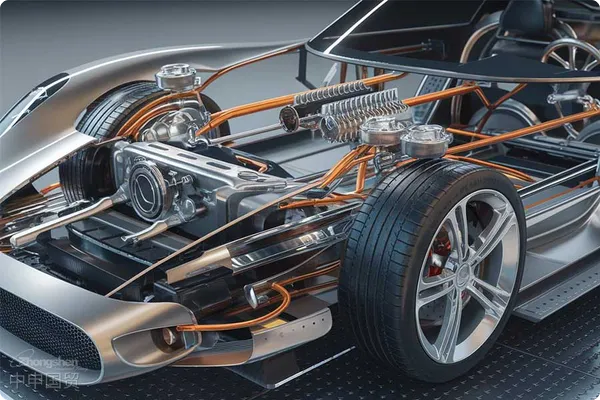
 PSB Record: Shanghai No.31011502009912
PSB Record: Shanghai No.31011502009912 